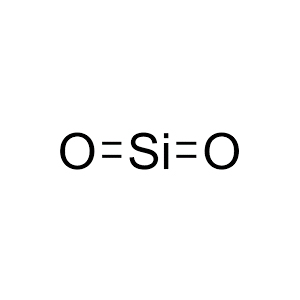Discover Aure Chemical's Premium Precipitated Silica
Precipitated Silica is a synthetic, amorphous form of silicon dioxide (SiO₂) that is manufactured through a wet chemical process, typically by the precipitation of a silicate solution with an acid. Unlike fumed silica, it features a more open, porous structure with a significant number of surface hydroxyl groups. It presents as a white, finely divided powder with high specific surface area and controllable particle size, making it a highly versatile functional filler and additive across numerous industries.
Basic Information of Precipitated Silica
| CAS No.: | 7631-86-9 (Commonly used for Amorphous Silica, including Precipitated Silica. Note: Other CAS numbers like 112926-00-8 or 10279-57-9 may also refer to specific forms or hydrated silica, but 7631-86-9 is broadly recognized.) |
|---|
| EC No.: | 231-545-4 |
|---|
| Linear Formula: | SiO₂ |
|---|
| Molecular Weight: | 60.08 |
|---|
| Appearance: | White, finely divided powder |
|---|
| Melting Point: | >1600 °C(lit.) |
|---|
| Boiling Point: | >100 °C(lit.) |
|---|
| Density: | 2.2-2.6 g/mL at 25 °C |
|---|
| Particle Size & Surface Area: | Available in various grades with controlled particle sizes and specific surface areas to suit diverse applications. |
|---|
| Purity: | High SiO₂ content, typically >90% on a dry basis. |
|---|
| Functionality: | Contains silanol (Si-OH) groups on its surface, allowing for chemical interactions and modifications. |
|---|
| Thickening & Thixotropy: | Effective rheology modifier in liquid systems. |
|---|
| Reinforcement: | Excellent reinforcing filler in elastomers. |
|---|
| Abrasion & Polishing: | Can provide mild abrasive properties. |
|---|
| Adsorption: | Good absorption capacity for liquids and oils. |
|---|
| Chemical Structure: |  |
|---|
Applications of Precipitated Silica
Precipitated Silica's unique properties make it an indispensable additive, enhancing performance and functionality in a broad spectrum of industries:
Rubber Industry (Tires & Non-Tire):
Primary reinforcing filler in "green tires" (low rolling resistance tires) to improve grip, reduce fuel consumption, and enhance wet traction.
Used in industrial rubber products, footwear (soles), and mechanical rubber goods to boost tear strength, tensile strength, and abrasion resistance.
Paints, Coatings, and Inks:
Acts as a thickener and thixotropic agent to control viscosity, prevent settling of pigments, and improve sag resistance.
Provides matting effects to achieve desired gloss levels in coatings.
Improves scratch resistance and adhesion.
Adhesives and Sealants:
Functions as a rheology modifier, improving slump resistance and workability.
Enhances the mechanical strength and cohesive properties of the final product.
Food and Feed Industries:
Used as an anti-caking agent for powdered food products (e.g., spices, instant coffee, powdered milk) to prevent agglomeration and improve flowability.
Serves as a carrier for liquids, essential oils, and flavors in powdered formulations.
Oral Care (Toothpaste):
Plastics Industry:
Paper Industry:
Why Choose Aure Chemical's Precipitated Silica?
By partnering with Aure Chemical for your Precipitated Silica needs, you gain access to:
Superior Quality & Purity: We provide precipitated silica that adheres to rigorous purity and performance standards, ensuring consistent and optimal results in your end products.
Tailored Grades: Our portfolio includes various grades with different particle sizes and surface areas, allowing you to select the perfect match for your specific application requirements.
Consistent Performance: Our stringent quality control protocols guarantee the reliability and batch-to-batch consistency you expect.
Reliable Supply Chain: Benefit from our robust production capabilities and efficient logistics, ensuring timely and secure delivery to support your manufacturing schedules.
Expert Technical Support: Our knowledgeable team is ready to provide in-depth technical information and guidance to help you optimize the use of precipitated silica in your formulations.

